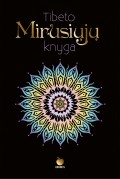 Original language:
Tibetan
Original language:
Tibetan Translated from: Tibetan
Translated by: Kugevičius, Algirdas
ISBN: 978-609-403-665-1
Published in: Kaunas
Published on: 2014
Publisher: Obuolys
“The Tibetan Book of the Dead” shows how Tibetan people understand death, past and future lives connection. It is a collection of Tibetan spiritual teaching and teaches us about journeys of death phases.
The book provides basic knowledge about Tibet, which helps better understand the country\’s beliefs, manners, culture and life. Tibetan civilization is unique, the locals believe that the inner and outer worlds are connected, and it is the main reason for the past and the future life connection. Tibetans have been focused on the inner life and its development since ancient times (they believe that personality development is endless). The inner life development was strongly influenced by Tibetan unusual nature – Himalayan Mountains, which encourages meditation and calmness.
The book also describes the stages of death and visions related to them, which help to achieve the spiritual liberation for the decedent. It describes the four major Buddhist stages of existence: Bardo of birth and life, the Bardo of the moment of death, the Bardo of supreme reality and the Bardo of becoming, which help to understand and prepare for the imminent death. “The Tibetan Book of the Dead” also describes eight stages during which people experience some symptoms and knowing them help easier orient in the after death world and quickly achieve spiritual liberation.
“The Tibetan Book of the Dead” is a guide, allowing not getting lost in death and rebirth stages. This book basis is that all beings are enlightened from the beginning and people need to reveal their (Buddha) nature. This training in Tibet is brought by Guru Padmasambhava in VIII century (who is also known as Guru Rinpoche and is considered to be a founder of Tibetan Buddhism), who is considered as “The Tibetan Book of the Dead” creator (even though he did not write this book, only pass its training).
